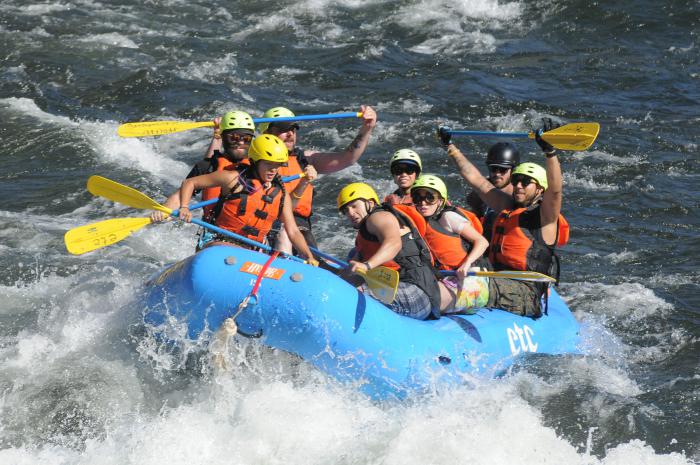
Over the past two summers we have successfully initiated a program of research to begin to test our hypotheses that 1) outdoors experience improves physical, mental, and social well-being and 2) the emotion of awe is an important mechanism driving these effects. In this brief we summarize the data that has already been collected, and detail promising findings that have emerged, some of which has already been submitted for publication.
Data collection summary
| Proposed study |
| Progress thus far |
Participants | 75 youth, 75 veterans |
| 116 youth, 20 veterans who went white-water rafting |
Protocol | Laboratory visit pre/post outdoor experience. 14-day diary protocol facilitated by Great Outdoors Lab app. |
| Pre/post survey and neuroendocrine measures administered day of rafting trip. One week follow-up survey via email. |
Physiological methods | Autonomic physiological workup including vagal tone and flexibility. Hormones, immune function (interleukin-6), and genotyping (DRD4). |
| Hormones (cortisol and DHEA-S) and genotyping (DRD4). |
Survey methods | Comprehensive measures of psychological and social well-being, PTSD, stress, depression, substance use |
| Brief measures of psychological and social well-being, PTSD, and stress. |
Overt behavior | Use of Go Pros to collect footage of each participant during outdoors experience |
| Over 250 hours of HD footage collected in total that includes every participant in the study. Currently being cleaned and organized for behavior coding |
Summary of findings
Findings from last summer’s (2014) work have already been submitted and are under review at the flagship journal of Social Psychology. Consistent with our hypotheses, awe was shown to be a unique pathway to well-being in that it promotes curiosity about one’s physical and social environment, which in turn positively impacts social well-being.
As social support has been shown to predict risk for mortality as strongly as smoking, excessive daily alcohol consumption, and obesity1, this work identifying how nature experience impacts social relationships is an important finding that identifies a novel mechanism by which time spent outdoors impacts well-being.
Other findings from last summer’s work are being prepared for submission to academic journals and are summarized below.
· Cortisol measured at the end of the white-water rafting trip is positively related to the positive emotions that people report experiencing during the trip. Our interpretation of this finding, given that white-water rafting is an intense, physically demanding activity, is that positive emotions are associated with a more adaptive hormone profile associated with mobilizing energy in the body. Cortisol levels after the rafting trip are in turn associated with increases in happiness levels measured at follow-up.
· People with variants of the DRD4 gene that are associated with decreased sensitivity in dopamine receptors in the brain report higher levels of awe, but not other positive emotions, during the rafting trips.
· People who have been rafting before report less positive emotion during the trips than people for whom it was their first time rafting. However, this effect was qualified by appreciation of nature’s beauty. Specifically, people with rafting experience who also reported appreciating the beauty of nature showed the same level of positive emotions as people who had never been rafting before.
Preliminary findings from 2015 data collection
The 2015 rafting season was the first time we enrolled military veterans in our research. Data collection is not yet complete, but preliminary analyses of 17 veterans indicate they reported decreased levels of PTSD symptoms (-35%) and stress (-15%), measured by items selected from the PTSD-checklist (PCL) and Perceived Stress Scale, respectively.
Examples of footage used for behavior coding
Example of distinct emotion display. Woman on right is showing a prototypical display of pride.
Example of variability between people in emotional expression during rafting.
1. Holt-Lunstad, J., Smith, T. B., & Layton, J. B. (2010). Social relationships and mortality risk: a meta-analytic review. PLoS medicine, 7(7), 859.
